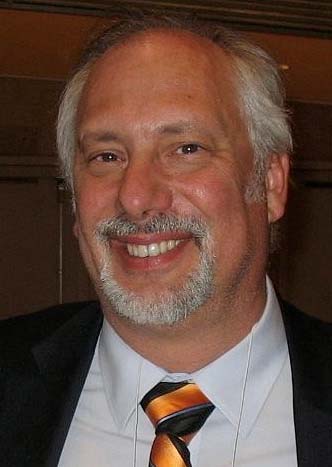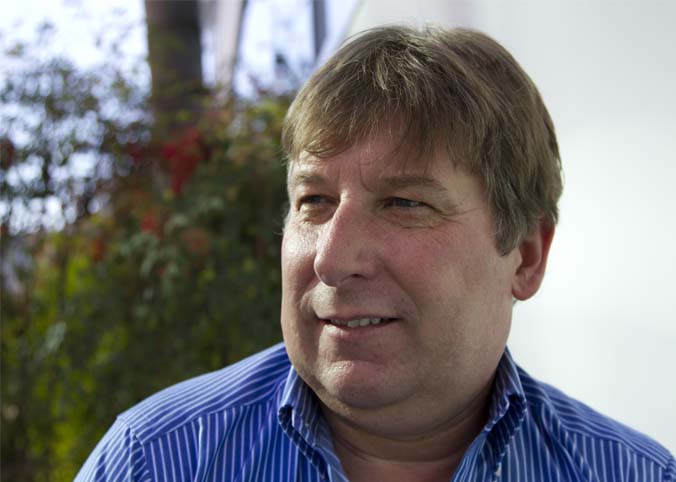Traditions, New Players Mix at 2014 SMPTE

Jim DeFilippis, SMPTE 2014 conference co-chair and SMPTE Fellow
HOLLYWOOD—Once a year, a convention descends on Hollywood to converse—not about movie premieres and marketing strategies—but about what’s behind it all: the technology, engineering and standards that power the professional media industry.
For the last 98 years, the SMPTE Technical Conference and Exposition has managed to stay true to its core tenets of education and standards work while simultaneously welcoming the newest players in the professional video market.
“SMPTE has remained more to its core purpose, the dissemination of technical [information] and education to benefit its members,” said Jim DeFilippis, SMPTE 2014 conference co-chair and SMPTE Fellow. “It’s unique; it’s not for everyone. It’s not going to draw the crowds like an NAB or IBC.”
THE MORE YOU KNOW
But this more intimate setting offers attendees something that they won’t necessarily find walking across the floor of those massive conventions, he said.
“It’s the quality of the technical conference [that makes SMPTE remarkable],” said Paul Chapman, SMPTE 2014 conference co-chair and Hollywood regional governor. “[That] is the one thing I made sure I made a way to attend because I knew that I was going to see the greatest [information out there]. Sometimes you don’t even know what you don’t know.”
Despite its ongoing commitment to its technical roots, the SMPTE conference is continuing to evolve. Earlier this year the society agreed to merge with the Hollywood Post Alliance (HPA), the post production trade association, and will co-locate at the fall show, set for Oct. 20-23 in Hollywood.
SMPTE also reached beyond its typical membership and has enlisted an executive from streaming giant Netflix to keynote the convention. That’s because Netflix has emerged as a leader in the over-the-top streaming space, Chapman said, and has reached out to SMPTE to become more involved in the standards process.
“We’ve been saying for years that we need to incorporate more of the new media industry,” DeFilippis said. “If SMPTE wants to continue to be relevant, we need to be inclusive.”

Paul Chapman, SMPTE 2014 Conference Chair and SMPTE Hollywood Regional Governor Netflix’s Chris Fetner, who serves as director of Content Partner Operations, said SMPTE’s work on various standards—most notably the IMF standard—is paving the way for companies like Netflix to grow their supply chain. “Netflix is interested in seeing wide adoption of the IMF standard,” Fetner said. “We see it as a great way to grow our supply chain and see wide adoption of the standard for everyone in the ecosystem.”
In his Tuesday morning keynote address, Fetner plans to touch on Netflix’s digital supply chain and its ongoing goal of growing the business globally. “SMPTE can play a role in bringing standards to the streaming world,” he said. “As streaming grows, SMPTE has a role in that [process] as much as they have in traditional film and broadcast markets.”
Beyond IMF, companies like Netflix are looking for SMPTE to address standards that cover color gamut and dynamic range. “The more we can engage with SMPTE and get wide adoption of standards, the better Netflix will be at giving our customers a great experience,” he said.
HPA MERGER
The organization is also evolving via a new merger with HPA, which is expected to be completed in May 2015. “For HPA, a closer relationship with SMPTE is also valuable in that it will enable our organization to extend the reach of our content and our work to a global audience beyond Hollywood,” said Leon Silverman, HPA board president. The SMPTE 2014 Symposium will be hosted on the first day of the conference by the HPA.
Both organizations are known for their individual technical retreats in the spring, but there are no plans to combine those conferences, organizers said. The merger, however, could lead to the creation of additional retreats, SMPTE said.
“The merger aligns well with SMPTE’s goals of standards education and membership,” Chapman said. “By bringing in HPA with SMPTE, we join a post-focused community with a data and standards- based community.”
SOUND AND VISION
Across the show floor and within technical sessions, topics up for discussion include the challenge of high frame rate conversion and cloud workflow issues. The show will touch on standards conversion issues as well, from the 2048 digital cinematography standard to the newly adopted Archive eXchange Format, AXF.

Wait, where did I put that? At the SMPTE session “Media Archiving, Standards and the Library of Congress,” an archivist will share how the Library of Congress is attempting to digitize its massive archive of audio, video and film stores. “[Certain sessions] will look at the challenges of high frame rate video, and how high dynamic range can bring a much better consumer experience or be a disaster if standards are not place,” DeFilippis said. “It’s so important that SMPTE is working on these standards.”
The show will also sessions such as “Listen Up – Immersive Sound,” which will look at immersive sound formats for sound design and mixing, as well as imagery-focused sessions like “Display Technologies: Where Do We Go From Here?” that will look at next-generation display interfaces.
How does a major organization like the Library of Congress put these technologies to work? The reality of making asset management technology work in the real world is the focus of the session “Media Archiving, Standards and the Library of Congress,” where project manager James Snyder will look at how the library is digitizing its collection of more than a million video recordings, three million audio recordings and 225 million feet of film.
The show is also benefited by its size. “The size of the show makes it very physically accessible,” Chapman said. Approximately 2,000 attendees are expected, with more than 80 vendors across the Loews Hollywood Hotel.
The convention will wrap up with the SMPTE 2014 Honors and Awards Ceremony.
For more information, visit https://www.smpte.org/smpte2014
Get the TV Tech Newsletter
The professional video industry's #1 source for news, trends and product and tech information. Sign up below.
Susan Ashworth is the former editor of TV Technology. In addition to her work covering the broadcast television industry, she has served as editor of two housing finance magazines and written about topics as varied as education, radio, chess, music and sports. Outside of her life as a writer, she recently served as president of a local nonprofit organization supporting girls in baseball.

